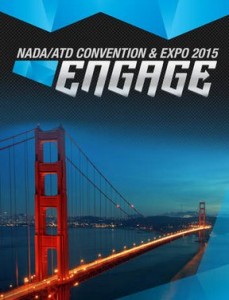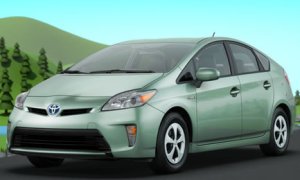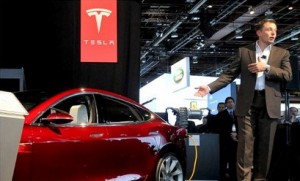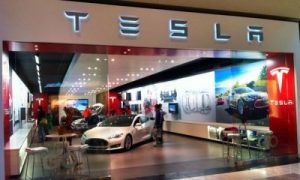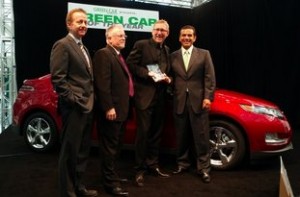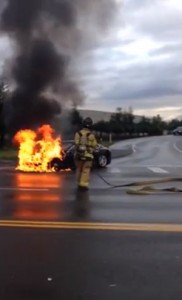There are several unknowns shrouding a new virus identified three months ago in China and now seeing fear spread worldwide. The World Health Organization (WHO) reported as of March 15, that there have been 153,517 confirmed cases and 5,735 deaths worldwide of COVID-19 — with 81,048 confirmed and 3,204 deaths in China. It crossed a pivotal point over the past week with the WHO declaring on Wednesday that the coronavirus is now officially a global pandemic. That announcement was followed on Friday with President Donald Trump declaring it a national emergency.
What is appearing to become the largest global development in years will continue to remain shrouded in mystery for  the unforeseen future. It will take quite a while until the public can rest assured that healthcare professionals can stop the spread and bring a cure — or at least arrest worsening of symptoms — for those infected with the contagious respiratory disease. It’s been causing panic among those crowding supermarkets to purchase bottled water, toilet paper, sanitary wipes, and in the past few days, nutritional basics such as canned soup, pasta, and bread. Governments around the world are placing severe restrictions on travel and public gatherings in attempts to quell panic and spreading of the infection and disease.
the unforeseen future. It will take quite a while until the public can rest assured that healthcare professionals can stop the spread and bring a cure — or at least arrest worsening of symptoms — for those infected with the contagious respiratory disease. It’s been causing panic among those crowding supermarkets to purchase bottled water, toilet paper, sanitary wipes, and in the past few days, nutritional basics such as canned soup, pasta, and bread. Governments around the world are placing severe restrictions on travel and public gatherings in attempts to quell panic and spreading of the infection and disease.
The global automotive and transportation sectors are starting the feel the impact first witnessed in China — and now spreading to every continent except for Antartica. The long-term impact is expected to be severe for governments pumping expenditures into testing for the infection, researching the virus in labs, and quarantining people who’ve tested positive for COVID-19 to their homes or to government-run facilities. Automakers and many other corporations are starting to take hits in stock market value, and many companies are expected to take huge financial losses. Some of that will come from revenue and profit loss as more and more events are being canceled if they have attendance of more than 50 people (or even less) — starting with sporting events being postponed and many other announcements such as Louisiana opting to postpone its April primary election; and schools telling students that classrooms will be closed for now and that universities will finish their semesters and quarters with online classes. Businesses around the country also have been shutting down over the past week.
There are many questions that will need to be answered in the weeks and months ahead…… Will people want to travel and take road trips, and will there be too many restrictions in place for it to work? Will their concerns for climate change and air pollution be anywhere near their fear of coronavirus spreading? As the economy is hit hard and job losses potentially get underway, will consumers be able to go check out new cars (including electric vehicles) and slap down their down payments? How will service-based sectors be impacted, such as auto sales and vehicle maintenance, public transit, and ride services, as the public will want less contact with others for fear of contagion? What will the oil price war between Saudi Arabia and Russia — intensified by the coronavirus news — mean long-term?
Here’s an overview of how the coronavirus is beginning to impact the automative and transportation sectors………….
Impact on China car sales: Retail sales of new vehicles in China, the world’s largest auto market, plunged 80 percent in February, according to the China Passenger Car Association. BYD’s electric vehicle sales dropped 79.5 percent year over year during that month. BAIC BluePark, the EV division of BAIC Group, dropped about 65 percent. Volkswagen’s EV partner JAC saw its sales drop by 63.4 percent. Coronavirus also forced temporary closures of Tesla’s new Shanghai car plant and stores throughout the country.
EV battery supply tightening: Many automakers are struggling to find adequate supplies of electric vehicle batteries. One of the factors is China being a major global leader in refining cobalt, a major ingredient in lithium batteries. The pandemic is expected to affect cobalt processing plants and EV costs. Prices are expected to be rise for automakers such as from Chinese lithium producer Ganfeng Lithium, which supplies Tesla and Volkswagen; although that cost increase has been by less than 10 percent so far.
What will oil price war mean?: Saudi Arabia declared a price war on Russia’s oil industry on March 8. Russian President Vladimir Putin had refused to cut back oil production in the face of depressed prices caused by an unprecedented 3.5 million barrels per day fall in demand that was thought to be caused mainly by the coronavirus crisis. The Saudis are now flooding the oil market and unilaterally slashed their own prices enough to drive down prices on Monday, March 9, by 25 percent. That overall trend was being felt over time. Brent oil plunged from $68.44 per barrel on December 30 to $34.36 on March 9. WTI went from $61.68 to $31.13 during that time. Analysts fear a serious negative impact on the US shale industry. Stock analysts assign the oil price plunge as a factor in Tesla’s share prices failing over the past week. Overall, analysts expect that the oil supply will continue increasing. Oilprice.com just reported that “the oil market is heading for the largest ever crude glut in the first half of 2020, which could be two to nearly four times bigger than the biggest surplus recorded so far.”
What about the economy?: The Federal Reserve decided yesterday to drop its benchmark interest rate by a full percentage point to near zero, and promised to boost its bond holdings by at least $700 billion. Fed Chairman Jerome Powell told press by phone that the virus’s disruption meant second quarter growth would probably be weak and it was hard to know how long the pain would last. That’s why the Fed is advocating a clear role for fiscal policy to help cushion the blow. Stocks are still way down from recent highs on fears of coronavirus, an oil price war and travel bans, and the automakers have been hit particularly hard as supply-chain problems mount across the globe. The Dow Jones Transportation Average is down 11 percent as a flood of store, restaurant and event closings send shockwaves. Major publicly traded companies in trucking, airlines, auto, freight/logistics, and railroads, are down about 10 percent to 22 percent today.
Musk downplays risk of coronavirus: Tesla and SpaceX CEO Elon Musk on Friday sent a company-wide email to SpaceX employees stating that evidence he had seen about COVID-19 “suggests that this is *not* within the top 100 health risks in the United States.” They have a higher risk of being killed in a car crash, he said. Days earlier, he’d tweeted that “the coronavirus panic is dumb,” which was liked by about a million of his Twitter followers. President Trump had taken a similar approach not long ago, stating that more people are likely to die from influenza than coronavirus. Trump has had to back off such comments, and has taken a few steps in the opposite direction since then including declaring the national emergency.
First US auto plant employee tests positive: The first-known employee of a Detroit automaker to be diagnosed with the coronavirus in the US works at a Fiat Chrysler Automobile plant near Indianapolis, which was confirmed on Thursday. The unnamed male employee at the Kokomo Transmission Plant, located about 50 miles north of Indianapolis, was quarantined and received medical care, according to Fiat Chrysler and the United Auto Workers union. An undisclosed number of other people who may have come into direct contact with the person diagnosed with coronavirus also have been quarantined, according to the automaker. Production at the plant continued as normal, but was later idled out of fear spreading among workers.
Air travel hit hard by restrictions: Major airlines have been particularly hit hard by the global pandemic, with the president’s new travel ban with Europe worsening it. The prospect of losing spring and summer bookings is another part of expected losses. British Airways’ chief Alex Cruz, told 45,000 staff on Friday, for airlines this is already bigger than the SARS epidemic, the aftermath of 9/11, or the 2008 financial crisis.
Delivery services still up and running: Amazon says its Prime delivery service is experiencing delays, and it’s running out of stock on some household staples due to the coronavirus outbreak, CNBC reported. Food and grocery delivery services such as DoorDash, Postmates, Grubhub, Uber Eats, and Instacart are seeing a lot business. There is currently no evidence that COVID-19 can be transmitted through food or food packaging, according to the CDC and the FDA. A larger concern is possibly transmitting the coronavirus from delivery person to customer, or vice versa, through coughing, vaporized air particles, or other direct contact. Companies are urging drivers and shoppers to take extreme caution.
BYD becomes largest face-mask supplier: BYD is becoming a major supplier of products that are now in extreme demand — face masks and disinfectants. Its new Shenzhen, China-based plant is able to product five million face masks and 300,000 bottles of disinfectants per day. It’s been done in response to severe shortages at hospitals and agencies across China since the COVID-19 outbreak. It started production on February 9, and now hundreds of employees are working day and night to fulfill orders.
Customers dwindling at dealer showrooms: Auto dealers are hearing worrisome news such as automakers shuttering plants in Asia and Europe, and schools closing and major events shutting down in the US. Some dealers are reporting dwindling visitors and sales. John Luciano, managing partner with Street Volkswagen in Amarillo, Texas, and chairman of Volkswagen’s national dealer council, says that sales are definitely falling and that conditions are changing a little bit more every day; a sentiment echoed by several other dealers. Cox Automotive, which owns Kelley Blue Book, Autotrader, and Manheim, sees negative U.S. economic growth in the second quarter and has withdrawn its forecast for 16.6 million new-vehicle sales in the US this year. Morgan Stanley analyst Adam Jonas would like the Trump administration to consider rolling out another “Cash for Clunkers” program, which was a $3 billion federal program in 2009 that incentivized consumers to swap aging gas-guzzlers for new, more fuel-efficient vehicles. Editor’s note: The Colorado house of representative just passed a measure that would allow electric vehicle-exclusive manufacturers such as Tesla to sell directly to consumers if the automaker has no franchised dealers in the state. It still has a ways to go to be cleared and become a new law in Colorado.
Trucking feeling the squeeze: West coast ports are starting to see a decline in cargo ships full of containers enter their ports, with the Port of Seattle seeing a recent decline akin to what usually happens over an entire years. The Ports of Los Angeles and Long Beach, collectively the nation’s largest port, is seeing a drop in ships entering the port and cargo containers being unloaded for truck transport. Much of that has been originating in China, where plants have been closed down for several weeks after the coronavirus outbreak became pervasive.
Automaker response to crisis: Ford, General Motors, and Fiat Chrysler Automobiles (FCA) have told non-factory employees to work remotely in order to avoid contracting and spreading the coronavirus. Factory workers at plants in the US, however, are being told to remain in place — despite the United Auto Workers union announcing Thursday that a Fiat Chrysler employee at the company’s Kokomo Transmission Plant in Indiana tested positive for COVID-19. Other automakers operating in the US are notifying employees with warnings. Nissan, which operates factories in Tennessee and Mississippi, said that employees who feel symptoms should notify their health care provider and not come to work. In Europe, FCA, Peugeot, Volkswagen, and Audi stopped much of their production plant work today as they grapple with the coronavirus crisis and plunging demand.
South Korea and China recovering, not so for Europe and the US: South Korea reported more recoveries from the coronavirus than new infections on Friday for the first time since its outbreak emerged in January. It’s raised hopes that Asia’s biggest epidemic outside China may be slowing. The Korea Centers for Disease Control and Prevention (KCDC) reported 110 new coronavirus cases on Friday compared with 114 a day earlier, taking the national total to 7,979 on that day. The death toll rose by five to 72 as of late Friday. China has seen a drastic drop in infections — from hundreds of cases per day in February, to less than 50 each day last week. The rate of resumption of work at its factories and provinces is slowly opening up. China had shut down most provinces in a bid to contain the outbreak, and roads, transportation networks as well as factories had been closed. Europe and the US are seeing their numbers continue to go up. Nearly 170 million people were under orders to remain in their homes this weekend as France and Spain joined Italy in placing strict quarantine rules on their entire populations amid alarming rises in coronavirus cases and deaths.
Facts about Coronavirus: For those wondering about some of the terminology and what’s expected to come next…………
- It’s now typically being called “novel coronavirus.” Why is that? Simply that it’s a new form of the coronavirus. As for coronavirus, the name covers a family of seven known viruses that can infect people, including the common cold and other respiratory infections.
- The 2019 novel (new) coronavirus has been named SARS-CoV-2, and the disease it causes is called coronavirus disease 2019, or COVID-19.
- The Centers for Disease Control and Prevention (CDC) defines the symptoms that may appear two-to-14 days after exposure as: fever, cough, and shortness of breath.
- The CDC recommends that you immediate get medical attention if you have any of these emergency warning signs:
—Difficulty breathing or shortness of breath
—Persistent pain or pressure in the chest
—New confusion or inability to arouse
—Bluish lips or face - CDC recommends taking the following steps to protect yourself:
—Clean your hands often
—Wash your hands often with soap and water for at least 20 seconds.
—You can also use a hand sanitizer that contains at least 60 percent alcohol.
—Avoid touching your eyes, nose, and mouth with unwashed hands.
—Avoid close contact with people who are sick.
—Be particularly careful if COVID-19 is spreading in your community.
While some people dispel vaccine as a solution, there has been a lot of interest in when we’ll be seeing a vaccine available at medical offices, similar to the flu shots our doctors and nurses have been recommending in recent years. However, it won’t be showing up anytime soon for the novel coronavirus.
“A vaccine that you make and start testing in a year is not a vaccine that’s deployable,” Anthony Fauci, director of the National Institute of Allergy and Infectious Diseases, said last week. The earliest it would be deployable, he said, is “in a year to a year and a half, no matter how fast you go.”

